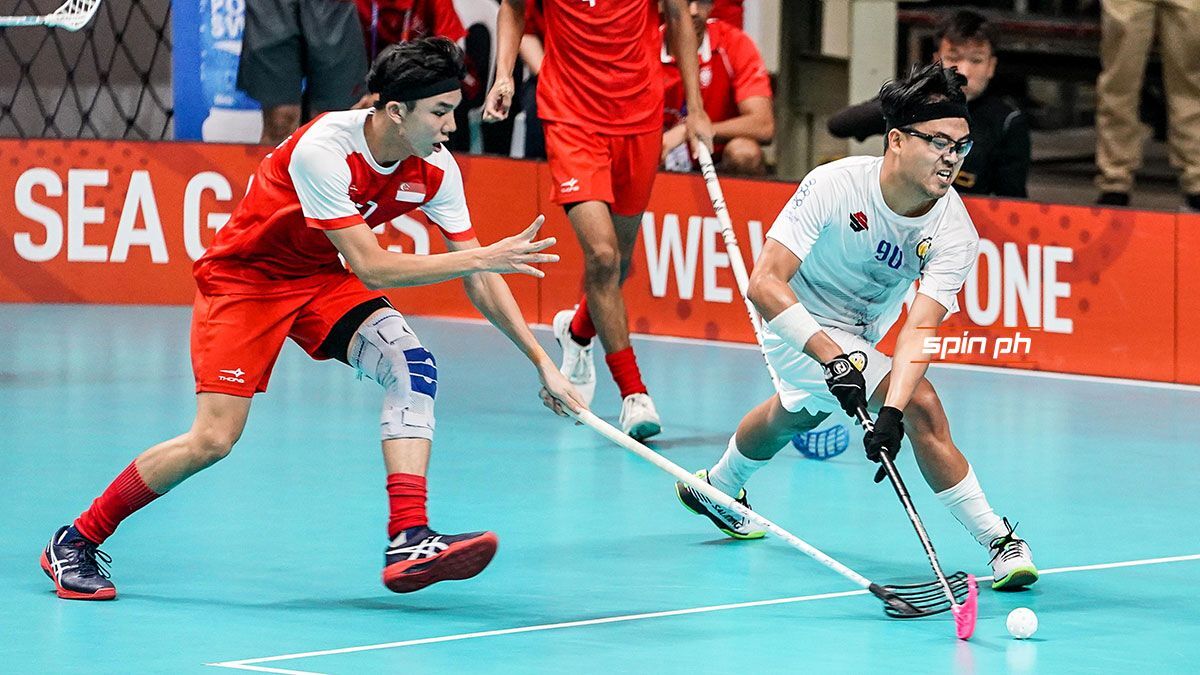
Welcome to the dynamic world of floorball, a fast-paced and exhilarating sport that has captivated the hearts of enthusiasts around the globe. Born in the indoor arenas of Sweden in the late 1960s, floorball has evolved into a sport that combines skill, strategy, and a commitment to inclusivity. From the establishment of the International Floorball Federation (IFF) in 1986 to the record-setting moments in attendance and individual achievements, floorball has woven a rich tapestry of history. In this exploration, we delve into 25 intriguing historical facts and numerical trivia that highlight the milestones, innovations, and global impact of floorball. Join us as we navigate through the fascinating facets of a sport that continues to gain momentum, reaching new heights and leaving an indelible mark on the world stage.
Origin: Floorball originated in Sweden in the late 1960s.
Floorball has its roots in Sweden, where it emerged as a response to the need for a sport that could be played indoors during the winter months. The late 1960s marked the initial development of the game, with enthusiasts seeking a fast-paced and dynamic alternative to traditional floor hockey. The sport gained traction not only in Sweden but also in neighboring Nordic countries, laying the foundation for its eventual global expansion.
Official Establishment: The International Floorball Federation (IFF) was founded on April 12, 1986.
The institutionalization of floorball on the international stage took a significant step forward with the establishment of the International Floorball Federation (IFF). Formed on April 12, 1986, the IFF has played a pivotal role in standardizing rules, organizing global competitions, and fostering the growth of floorball across diverse cultures. The federation’s commitment to promoting the sport has been instrumental in bringing together a diverse array of nations under the common banner of floorball.
Inaugural World Championships: The first Men’s Floorball World Championships were held in 1996, while the Women’s Floorball World Championships began in 1997.
The inception of the Men’s Floorball World Championships in 1996 and the Women’s Floorball World Championships in 1997 marked pivotal moments in the sport’s history. These competitions provided a platform for national teams to showcase their skills and compete at the highest level. The establishment of world championships not only elevated the prestige of floorball but also fueled the enthusiasm and commitment of players, fans, and organizations involved in the global floorball community.
Participating Countries: As of 2022, over 80 countries are members of the IFF.
The exponential growth of floorball is evident in its global reach, with over 80 countries joining the International Floorball Federation (IFF) by 2022. This extensive international participation underscores the sport’s appeal and its ability to transcend geographical and cultural boundaries. The diverse representation within the IFF contributes to a rich tapestry of floorball, with unique playing styles and traditions converging on the global stage during events like the World Championships.
Game Duration: A standard floorball match consists of three periods, each lasting 20 minutes.
Floorball’s game structure is characterized by its fast-paced and intense nature, with matches divided into three periods, each lasting 20 minutes. This format demands consistent energy, strategy, and skill from players, creating an exhilarating experience for both participants and spectators. The concise nature of each period contributes to the sport’s accessibility and popularity, making it an attractive option for players and fans alike.
Goal Size: The dimensions of a floorball goal are 160 cm in height and 115 cm in width.
Precision and accuracy play crucial roles in floorball, and the dimensions of the goal reinforce these aspects. A floorball goal stands at 160 cm in height and spans 115 cm in width, challenging goalkeepers to cover the target effectively. The compact size of the goal emphasizes the sport’s emphasis on skillful shooting and strategic play, fostering an environment where every goal is a testament to a player’s proficiency and the team’s coordinated efforts.
Ball Weight: The floorball weighs approximately 23 grams.
The lightweight nature of the floorball, tipping the scales at approximately 23 grams, contributes to the sport’s dynamic and fast-paced character. This design choice enhances ball control, facilitating quick passes, precise shots, and intricate maneuvers on the playing surface. The emphasis on a lightweight ball aligns with floorball’s commitment to skillful and agile gameplay, distinguishing it from other indoor sports with heavier projectiles.
Stick Length: Floorball sticks are typically between 92-105 cm in length.
Floorball sticks, essential tools for players, are carefully designed with lengths typically ranging between 92 to 105 cm. This standardized range ensures that players can customize their equipment based on individual preferences and playing styles. The stick’s length influences a player’s reach, control, and shooting technique, making it a vital element in the personalization of play. This adaptability fosters a diverse range of playing styles, contributing to the sport’s inclusivity and appeal.
Player Positions: A floorball team has six players on the field, including one goalkeeper.
Floorball’s team structure consists of six players on the field at any given time, comprising outfield players and a goalkeeper. The strategic deployment of players, each with specific roles and responsibilities, adds depth to the tactical dimension of the game. The goalkeeper, equipped with specialized gear, serves as the last line of defense, while outfield players collaborate to create scoring opportunities and thwart the opposition. This balanced composition ensures a dynamic and engaging team dynamic during matches.
World Championship Medals: As of 2022, Sweden leads in Men’s World Championships with the most gold medals.
The Men’s Floorball World Championships have witnessed the emergence of powerhouse nations, with Sweden standing tall as a dominant force. As of 2022, Sweden has secured the most gold medals in Men’s World Championships, attesting to its historical prowess in the sport. This success reflects Sweden’s commitment to floorball excellence and serves as a source of inspiration for aspiring players and nations seeking to make their mark on the international stage. The rivalry and camaraderie among top-performing nations add an extra layer of excitement to the World Championships, making it a showcase of the sport’s global talent.
Women’s Dominance: Finland has been dominant in Women’s World Championships, securing multiple gold medals.
The Women’s Floorball World Championships have seen Finland establish itself as a powerhouse, consistently securing multiple gold medals. The Finnish women’s team’s dominance reflects a combination of skill, teamwork, and strategic prowess. Finland’s success not only underscores the nation’s commitment to fostering women’s floorball but also inspires female players worldwide. The Women’s World Championships serve as a platform for showcasing the evolution of the sport and the growing competitiveness among nations, with Finland setting a high standard for excellence.
Fastest Goal: The fastest goal in floorball history was scored in 4 seconds by Finnish player Tero Tiitu in 2004.
Tero Tiitu etched his name in floorball history with an astonishing feat in 2004, scoring the fastest goal ever recorded in just 4 seconds. This remarkable achievement highlights the potential for swift and decisive plays in floorball, catching opponents off guard and setting the stage for intense matches. Tiitu’s record-breaking goal remains a testament to individual skill and quick thinking, demonstrating the sport’s capacity for breathtaking moments.
Player Transfers: In 2019, a historic transfer fee of €300,000 was paid for Swedish floorball player Emil Johansson.
The world of floorball experienced a groundbreaking moment in 2019 when Swedish player Emil Johansson became the subject of a historic transfer. A staggering transfer fee of €300,000 was paid, signaling a growing recognition of top-tier floorball talent and the professionalization of the sport. This landmark transaction shed light on the economic dynamics within the floorball community and underscored the value placed on elite players in the market.
Most Expensive Floorball Stick: Some premium floorball sticks can cost over $200, emphasizing advanced materials and technology.
The evolution of floorball equipment extends to the sticks, with premium options pushing the boundaries of innovation. Some of the most expensive floorball sticks on the market can surpass $200, showcasing advanced materials, ergonomic designs, and cutting-edge technology. This emphasis on high-quality equipment reflects the sport’s commitment to providing players with tools that enhance performance, responsiveness, and durability.
Youth Development: Many countries have youth floorball programs, with children as young as six participating.
Floorball’s appeal extends to the younger generation, with numerous countries implementing youth development programs. Children as young as six years old actively participate in organized floorball leagues and training sessions, fostering a love for the sport from an early age. Youth development initiatives contribute to the sport’s long-term sustainability, ensuring a continuous influx of talent and nurturing a vibrant floorball community globally.
Olympic Aspiration: Floorball has sought inclusion in the Olympic Games, with efforts ongoing as of 2022.
Floorball’s aspirations reach beyond its established competitions, with ongoing efforts to secure a place in the Olympic Games. The inclusion of floorball in the Olympics would elevate the sport’s global profile, attracting increased attention and participation. The international floorball community continues to work towards this goal, emphasizing the sport’s universal appeal and potential to captivate audiences on the grand stage of the Olympic Games.
Popularity in Europe: Floorball is particularly popular in European countries such as Sweden, Finland, Switzerland, and the Czech Republic.
While floorball has gained traction globally, its roots and strongholds are notably deep in European countries. Nations like Sweden, Finland, Switzerland, and the Czech Republic have embraced floorball with enthusiasm, boasting vibrant leagues, passionate fan bases, and successful national teams. The sport’s popularity in Europe contributes significantly to its overall growth and competitiveness on the international stage.
International Club Competitions: The Champions Cup is an annual competition featuring the best floorball clubs from around the world.
The Champions Cup stands as a pinnacle of international club competitions in floorball, featuring the best clubs from around the world. This annual event showcases top-tier talent and fosters a spirit of global competition, providing a platform for clubs to assert their dominance on an international scale. The Champions Cup represents the pinnacle of club floorball, drawing attention to the diversity and excellence present in club-level competitions.
Gender Equality: Floorball has been praised for its emphasis on gender equality, with equal opportunities for men and women.
Floorball stands out in the world of sports for its commitment to gender equality, providing equal opportunities for both men and women to participate and excel. This inclusive approach has garnered praise from advocates for gender equality in sports, setting a positive example for other disciplines. The promotion of women’s floorball has led to the emergence of strong female athletes and increased visibility for women’s sports on a global scale.
IFF Events Calendar: The IFF organizes various events, including the Floorball World Championships, Champions Cup, and World University Floorball Championships.
The International Floorball Federation (IFF) plays a central role in coordinating a diverse range of events that showcase the sport’s global appeal. The annual Floorball World Championships, the prestigious Champions Cup, and the World University Floorball Championships highlight the IFF’s commitment to providing competitive platforms for players at various levels. The events contribute to the sport’s growth, fostering camaraderie among nations and showcasing the evolving landscape of floorball on the international stage.
Record Attendance: The highest recorded attendance for a floorball match was in 2016 when over 30,000 spectators attended a game in the Czech Republic.
In 2016, floorball achieved a significant milestone in fan engagement when a match in the Czech Republic garnered an astonishing attendance of over 30,000 spectators. This record-setting moment showcased the sport’s ability to captivate large audiences, underlining its growing popularity and drawing parallels with established indoor sports. The immense turnout not only reflected the fervor of local fans but also indicated a broader trend of increasing interest in floorball on a global scale.
Equipment Evolution: The evolution of floorball equipment has seen innovations in stick materials, blade designs, and goalie equipment.
Floorball’s commitment to staying at the forefront of innovation is evident in the continuous evolution of its equipment. Over the years, advancements in stick materials, blade designs, and goalie equipment have played a crucial role in enhancing player performance. Technological innovations contribute to the sport’s dynamic nature, providing players with tools that offer improved control, accuracy, and durability.
Hall of Fame: The IFF inaugurated its Hall of Fame in 2010, honoring individuals who have made significant contributions to floorball.
In 2010, the International Floorball Federation (IFF) established its Hall of Fame, a distinguished institution that honors individuals who have left an indelible mark on the sport. Inductees into the Hall of Fame are recognized for their outstanding contributions as players, coaches, administrators, or ambassadors of floorball. This initiative not only pays tribute to the sport’s luminaries but also preserves their legacies for future generations, further solidifying the cultural and historical significance of floorball.
Referee Signals: Floorball referees use hand signals for various infractions, ensuring clear communication during the game.
Clear and concise communication is paramount in floorball, and referees play a crucial role in maintaining order on the playing surface. Referees employ a set of standardized hand signals to communicate various infractions, ensuring that players, coaches, and spectators can easily interpret decisions made during the match. This commitment to transparency contributes to the fair and competitive nature of floorball, fostering an environment of mutual understanding and respect.
Global Outreach: Floorball has expanded its reach to countries outside of Europe, with growing popularity in Asia, North America, and Australia.
While floorball has strong roots in Europe, its appeal has transcended continental boundaries, with increasing popularity in regions like Asia, North America, and Australia. The global outreach of floorball is evidenced by the establishment of leagues, participation in international competitions, and a growing fan base in diverse cultural contexts. This expansion not only diversifies the player pool but also enriches the sport’s global tapestry, reinforcing floorball as a truly international phenomenon.









